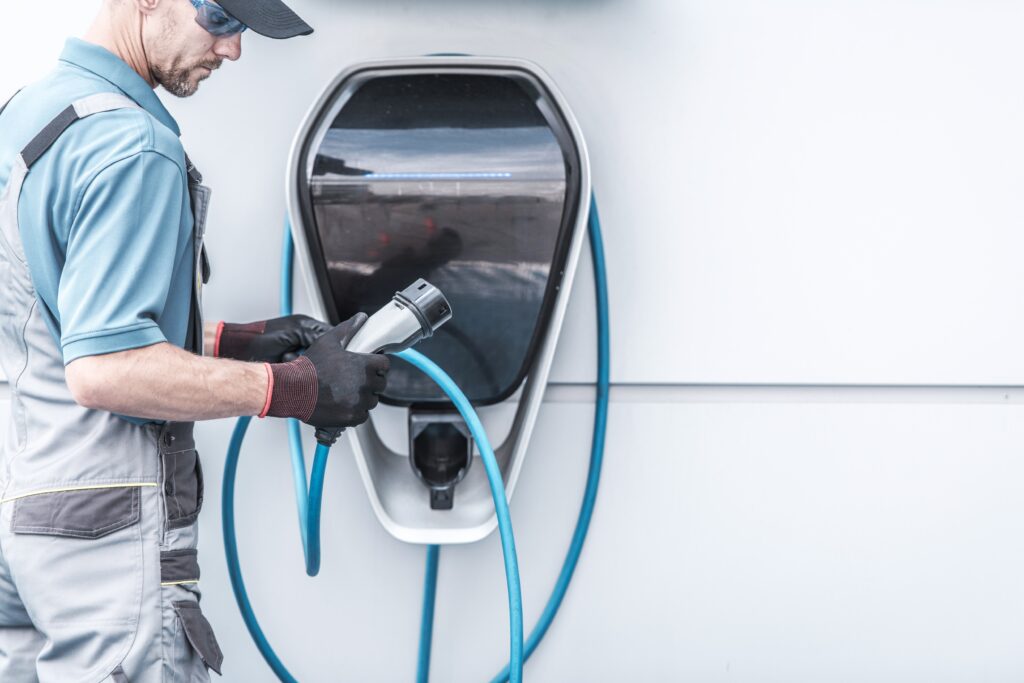
If you have purchased a new electric vehicle (EV) or are planning to get one soon, you will be happy to hear that it now comes with its electric car charger, although you will need to have a qualified electrician install it in your home.
However, there are still some decisions you will have to make, so here are some things for you to consider before making an appointment for the installation.
You should call Mark on 0416921978 for a free quote before you even buy your electric vehicle. He can provide you with practical advice for choosing a new home charging station and give you a quote for installing one.
Other things to consider.
Do I have a big enough power supply to add an EV charger?
Most modern homes or homes built from the 1980s onwards should have a power supply and switchboard that can handle the addition of an electric car charger.
If your house is built before this and has not had its power supply and switchboard upgraded, then you may need to consider that this will become a bigger job than first thought.
However, the outcome will be you have a much safer electrical system in your house and ample power supply for it to operate efficiently.
Electric vehicles are only going to become more common, so there’s always the possibility you will end up replacing another of your family vehicles with one. In which case, there is an even greater chance that your wiring might not be up to handling the power load.
This is particularly true of homes that were built before or during 1970. Unless the dwelling has been significantly renovated since then, you would almost certainly need to upgrade the electrical supply.
Slow or Fast?
Another major factor to consider before installing an electric car charger is how fast you will need the car to charge. Like most things, there will be some trade-offs between cost and capability.
Your options are to plug into an existing powerpoint, run a designated single-phase circuit, or run a designated 3 phase circuit.
Plug into an existing powerpoint.
This is the cheapest and easiest option. But it is also the slowest and does not give you the technical benefits that a charging station will. It will need to be protected by an electrical safety switch.
Single-phase dedicated power supply
A single-phase circuit of 20 Amp or 32 Amp is the most commonly used to power up the charger.
Depending on the distance from your main switchboard, that will determine the cost of the job. The further away it is then the more work that will be required.
A significant advantage of installing your charging station is that it will be equipped with “smart” features. For example, if you have a “smart” meter, switch charging times to cheaper tariffs that are available throughout the day or night.
Three-phase dedicated power supply
A three-phase 32 Amp power supply is the fastest way to charge your EV. You will need to have a 3 phase power supply connected to your house and sufficient space on your switchboard to install the new three-phase circuit and safety switch.
Frequency
If an EV is used to drive to and from work, then most drivers would find it adequate charging it on a single phase overnight just once or twice a week. However, someone who is driving many kilometres a day will very likely prefer to charge their car fully at least every other night, maybe even every night.
Battery size
The size of your EV’s battery will be a factor in how quickly it charges as well. Charging may take about seven to eight hours for car models that have large batteries. EVs that use a Li-ion battery can be charged in three ways:
- Quick charge: The battery can get up to an 80% charge in about 30 minutes.
- Normal charge: An empty battery would take seven to eight hours to reach a full charge.
- Trickle charge: When only a 120V outlet is available, you can gain around 8 kilometres of range for every hour it’s plugged in.
As I mentioned earlier, the best starting point is to give me a call on 0416921978, and I will be happy to stop by and discuss what options you might have.
And what costs would be involved in getting your EV charging station installed?

